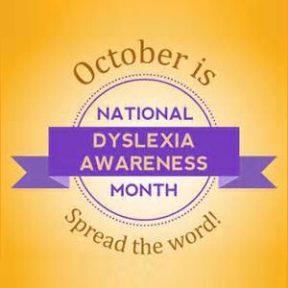 On October 8, 2015 , when Governor Brown signed the first dyslexia law in 25 years, parents of dyslexic kids sobbed with relief and elation. Yes you read that right, we sobbed. We know that AB 1369 will begin to help millions of kids and their parents in California from having the heartache, fear, despair, and anxiety that we experienced when our dyslexic kiddos were in public school.
On October 8, 2015 , when Governor Brown signed the first dyslexia law in 25 years, parents of dyslexic kids sobbed with relief and elation. Yes you read that right, we sobbed. We know that AB 1369 will begin to help millions of kids and their parents in California from having the heartache, fear, despair, and anxiety that we experienced when our dyslexic kiddos were in public school.
There is only one difference between my dyslexic kid and a kid that is not, and that is his brain. Now that brain scans are possible, scientists know the dyslexic brain not only looks different than the non-dyslexic brain but IS different. The dyslexic brain is not wired to process language easily and learns differently than the “regular” brain. I quoted “regular” because dyslexic kids in schools all across this country are made to believe that something is wrong with them, that they are less than, because their brain learns differently.
Nothing could be farther from the truth.
Dyslexia is not an intellectual disability. A persons’ intelligence is not lowered by his dyslexia. When a 1st or 2nd grade student with dyslexia struggles to read or write when the rest of his class is not, he quickly realizes that there is something very different about him and easily jumps to the conclusion that he is stupid. In public school, if a child is identified early and gets services because of his dyslexia (this is a whole other blog post for another day) he gets pulled from his classmates a few times a day to go to a little special room, with a handful of other kids and a teacher, adding more evidence to the folder of “I must be stupid, since I need to go to a special room with a special teacher”.
The irony of it all is the special teacher in the special room has no idea how to teach dyslexic kids effectively. Resource teachers, or general education teachers for that matter, are not trained on how to recognize or teach to a dyslexic student. It is widely known that 1 in 5 people in this country are dyslexic. 20% of the population and 80% of those kids are currently receiving special education services.
We sobbed at the passing of AB1369 for other people’s kids. For years we watched our smart, beautiful children not getting what they needed at school and instead being emotionally harmed. When you truly believe that you are stupid or something is wrong with you, make no mistake, you are harmed in a way that affects your soul and the trajectory of your life.
AB 1369 does not fix everything in public school but it is such an encouraging start.
Technically, this law does two things:
- It adds phonological processing deficit to the eligibility criteria for Specific Learning Disability under special education and
- It requires the State Superintendent to develop program guidelines for dyslexia to help teachers & parents identify and assess pupils with dyslexia. It specifically clarifies that “educational services” means an evidence-based, multisensory, direct, explicit, structured, and sequential approach to instructing pupils who have dyslexia.
Now educators can say “dyslexia”, learn how to identify it and implement appropriate instruction! (insert sobbing here).
It has been known for over 15 years from evidence-based research, that dyslexic students learn when they receive this kind of instruction. What is more exciting is that kids that do not have dyslexia but who may struggle in school also benefit from this type of instruction. Actually ALL kids can learn from this type of teaching. This law may actually begin the process of tackling this state’s high illiteracy rates
We sobbed with happiness at the idea that millions of moms and dads will eventually not have to worry about their kids, like we did.
Charlene Mercadante is a mom of two boys. Her 20 year-old son is dyslexic. She volunteers for Decoding Dyslexia CA in San Mateo County and The Charles Armstrong School in Belmont, CA. Her passion to help other parents like herself was ignited when she & her husband anguished over how to help their son in early elementary school. Follow her on Twitter @CharleneMerc
Decoding Dyslexia CA made AB 1369 happen and is a grassroots movement of CA families concerned with the limited access to educational interventions for dyslexia and other language-based learning disabilities within our public schools. They aim to raise awareness, empower families to support their children and inform policy makers on best practices to identify, remediate and support students with dyslexia in CA public schools. www.DecodingDyslexiaCA.org



 Here’s something kind of incredible: a student at the Utrecht Art Academy in the Netherlands has designed a font that makes it easier for dyslexic students to read.
Here’s something kind of incredible: a student at the Utrecht Art Academy in the Netherlands has designed a font that makes it easier for dyslexic students to read.
 We all use social media to stay in touch with friends and family but did you know that it can affect college admissions or job recruitment?
We all use social media to stay in touch with friends and family but did you know that it can affect college admissions or job recruitment?
 When guests notice that I label my pantry, utensil drawers, and even my laundry room, I kind of get an odd look – like I must be wound a little too tight or like I’m simply ridiculous. My husband thinks I’m over the top (like crazy). But hey, I’ve been super organized forever, and I’m not offended by their comments. They’re just jealous!
When guests notice that I label my pantry, utensil drawers, and even my laundry room, I kind of get an odd look – like I must be wound a little too tight or like I’m simply ridiculous. My husband thinks I’m over the top (like crazy). But hey, I’ve been super organized forever, and I’m not offended by their comments. They’re just jealous!
 When college tuition for a 4-year bachelor’s degree exceeds $200,000, you would think colleges would boast about their professors — those who TEACH the students.
When college tuition for a 4-year bachelor’s degree exceeds $200,000, you would think colleges would boast about their professors — those who TEACH the students.
 When colleges now accept 58% girls and just 42% boys, admissions committees are — once again — trying to level the playing field. Hmm. It’s beginning to sound a bit like Affirmative Action…
When colleges now accept 58% girls and just 42% boys, admissions committees are — once again — trying to level the playing field. Hmm. It’s beginning to sound a bit like Affirmative Action…
 Did you know that one in every five people is dyslexic? That’s 20% of our population!
Did you know that one in every five people is dyslexic? That’s 20% of our population!
 Each year college essay prompts get more complicated and difficult to write.
Each year college essay prompts get more complicated and difficult to write.
 Paleo and raw vegan people — you can eat delicious chocolaty and nutty desserts!
Paleo and raw vegan people — you can eat delicious chocolaty and nutty desserts!
 Did you know that every time you take the SAT, you can list up to 4 colleges to send those scores to for FREE?
Did you know that every time you take the SAT, you can list up to 4 colleges to send those scores to for FREE?